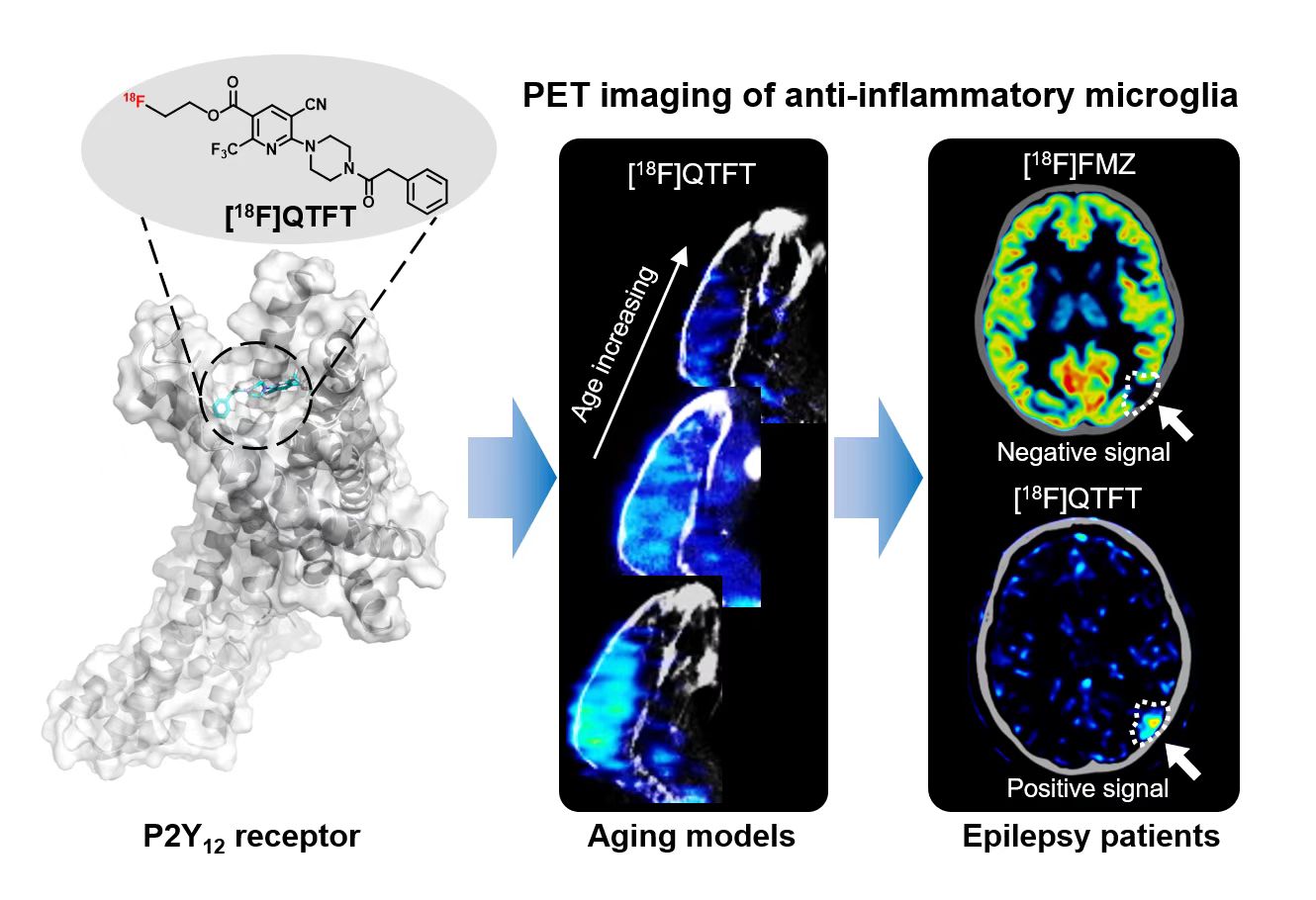
Microglia, as resident immune cells in the brain, play crucial roles in processes such as synaptic pruning, pathogen phagocytosis, neuronal excitability regulation, apoptotic cell clearance, and the formation of the immune microenvironment. To achieve their functional diversity, microglia exhibit multiple polarization states, including a pro-inflammatory phenotype that resists pathogens and an anti-inflammatory phenotype that promotes tissue repair. The phenotypes of microglia are closely related to the pathogenesis of brain diseases, the regulation of the immune microenvironment, and the level of neuroinflammation. Therefore, visualizing microglial phenotypes is of great significance for understanding the progression of brain diseases, monitoring the neuroimmune microenvironment, and assessing the prognosis of candidate drugs.
Although multiple neuroinflammation-related receptors have been reported, their application in neuroinflammation visualization research still faces limitations: (1) These related receptors are expressed in various brain cells, leading to a decrease in probe specificity; (2) They cannot effectively distinguish different phenotypes of activated microglia, limiting the accuracy of their assessment of the immune-inflammatory microenvironment. P2Y12 is a purinergic receptor expressed only on the surface of microglial membranes, and its expression level is cell-phenotype-dependent. The expression level in anti-inflammatory microglia is significantly higher than that in the pro-inflammatory phenotype. Thus, constructing a P2Y12-targeted PET probe is of great importance for monitoring the phenotypic transformation of microglia related to brain diseases, the neuroimmune microenvironment, and the progression of acute inflammation.

QTFT exhibits a high affinity for the P2Y12 receptor. It has demonstrated excellent imaging results in animal experiments, such as the senescence model in mice, and has also been used in pioneering clinical trials on epilepsy patients.
Recently, the research group led by Professor Cong Li from the School of Pharmacy, Fudan University, published a research paper titled "Synthesis, Preclinical Evaluation, and Pilot Clinical Study of a P2Y12 Receptor Targeting Radiotracer [18F]QTFT for Imaging Brain Disorders by Visualizing Anti-Inflammatory Microglia" in Acta Pharm Sin B. This study developed a small-molecule PET probe [18F]QTFT targeting P2Y12. It not only has a high affinity for the P2Y12 receptor (14.43 nmol/L) but also exhibits good blood-brain barrier permeability, providing a new tool for the accurate localization of brain lesions in aging, epilepsy, glioma, and other conditions.
Bolin Yao and Jianing Li, Ph.D. students from the School of Pharmacy, Fudan University; Yanyan Kong, an associate chief physician from Huashan Hospital Affiliated to Fudan University; and Fulin Xu, a chief physician in the Department of Neurosurgery at Minhang Hospital Affiliated to Fudan University are the co-first authors of this article. Professor Cong Li and associate professor Cong Wang, from the School of Pharmacy, Fudan University, and Dr. Xin Zhang, an attending physician in the Department of Neurosurgery at Huashan Hospital Affiliated to Fudan University, are the co-corresponding authors of this article. This work was supported by the National Key Research and Development Program of China, the National Science Fund for Distinguished Young Scholars, and Shanghai Science and Technology Projects.
Original article link: https://www.sciencedirect.com/science/article/pii/S2211383525000140?via%3Dihub